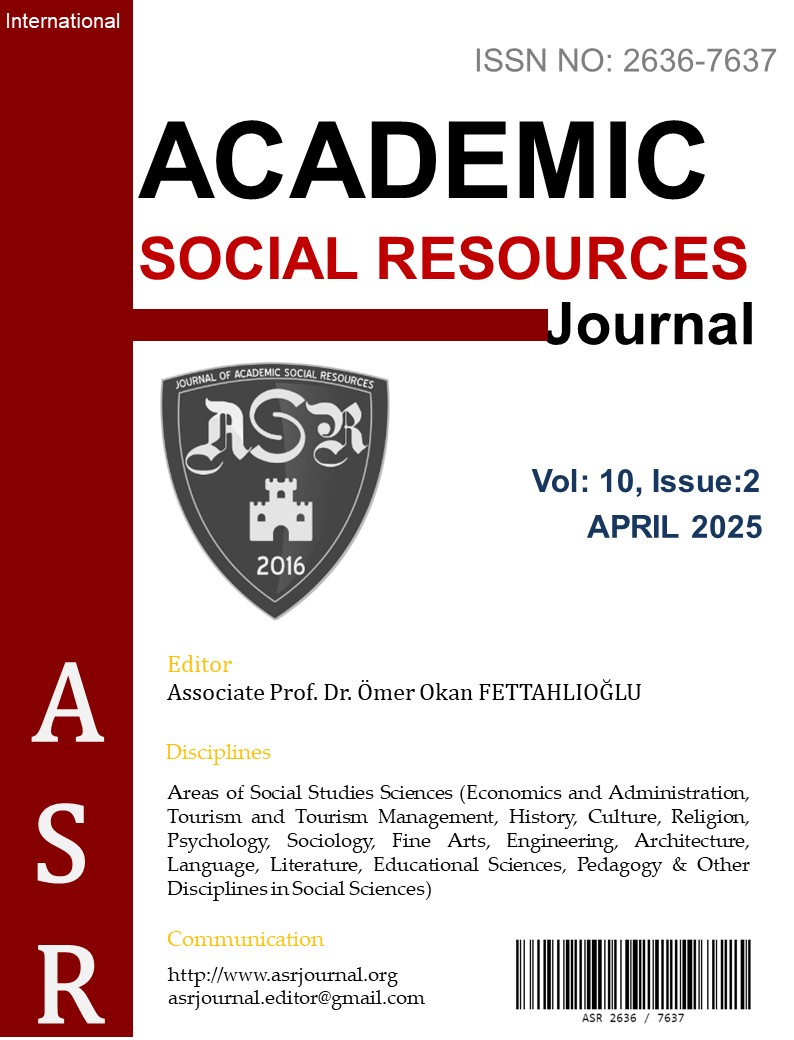Author :
Abstract
Siyasi coğrafyadaki tartışmalar arasında etnik kökenlerin tartışılması, etnik kökenlerin oluşum ve bir araya gelme yolları Coğrafi alanlar ve diğer etnik ve ırksal gruplarla etnik içi ve etnik dışı etkileşimlerinin yolları açısından Afganistan'daki etnik kökenler, çeşitli biçimlerde etnik entegrasyona sahip ülke olarak adlandırılan olgunun oluşumunda önemli bir rol oynamıştır.
Bu nedenle, bu araştırmanın merkezi konusu olan Afganistan ülkesi, özellikle siyasi coğrafya olmak üzere çeşitli coğrafi boyutlarda incelenebilir, incelenebilir ve araştırılabilir. Betimsel-analitik bir yöntem kullanan bu araştırma, etnik grupların 2001'den sonra Afganistan'ın siyasi yapısının ve egemenliğinin oluşumundaki yerini belirlemeyi amaçlamaktadır.
Bu çalışmanın ve diğer bazı çalışmaların sonuçları, geçmişte etnik milliyetçilik ideolojisiyle desteklenen kabile güç yapısının, baskın olmayan etnik gruplar arasında kabileciliğe ve etnosentrizme de yol açtığını, etnosentrizmi toplumun her köşesinde doğal ve yaygın bir olguya dönüştürdüğünü ve Afganistan'da ulusal bir kimlik krizine neden olduğunu göstermektedir. Uzun vadeli etnik egemenlik, toplumu etnik normların ve çıkarların bireylerin ve sosyo-politik grupların siyasi davranışlarını belirlediği bir duruma getirmiştir. Öte yandan, Afganistan, etnik köken ve kabile çeşitliliği nedeniyle, çeşitli ırkların ve ulusların büyük bir müzesi olarak tanımlanmıştır. Bu ülkede Peştun, Hazara, Tacik, Özbek, Türkmen, Beluç, Kırgız, Kızılbaş, Aymak, Nuristani, Keşmirli, Hindu, Sih ve diğer etnik gruplardan insanlar yaşamaktadır.
Afganistan etnik bir yapıya sahip olduğundan, siyasi yapının eylem ve faaliyetlerinin ve siyasi gücün dolaşımının yalnızca belirli bir kabile ve kabile içinde gerçekleşmesi doğaldır ve buna bağlı olarak, bu ülkedeki siyasi sistem çoğunlukla kabileler ve kabileler biçimindeki nüfus alt sistemleriyle ilişkili olmuştur.
Keywords
Abstract
Among the discussions in political geography, the discussion of ethnicities, the ways of formation and aggregation of ethnicities In terms of geographical areas and the way of their intra-ethnic and extra-ethnic interactions with other ethnic and racial groups, ethnicities in Afghanistan have played a significant role in the formation of the phenomenon called the country with ethnic integration in various forms.
Therefore, the country of Afghanistan, which is the central subject of this research, can be examined, studied, and investigated in various geographical dimensions, especially political geography. This research, using a descriptive-analytical method, seeks to identify the place of ethnic groups in the formation of the political structure and sovereignty of Afghanistan after 2001.
The results of this study and some other studies show that the tribal power structure in the past, supported by the ideology of ethnic nationalism, has also led to tribalism and ethnocentrism among non-dominant ethnic groups, turning ethnocentrism into natural and widespread phenomena in all corners of society and causing a national identity crisis in Afghanistan.
Long-term ethnic dominance has led society to a state in which ethnic norms and interests determine the political behavior of individuals and socio-political groups. On the other hand, Afghanistan, due to its diversity of ethnicities and tribes, has been described as a great museum of diverse races and nations. In this country, people of the Pashtun, Hazara, Tajik, Uzbek, Turkmen, Baloch, Kyrgyz, Qizilbash, Aymak, Nuristani, Kashmiri, Hindu, Sikh and other ethnic groups live.
Since Afghanistan has an ethnic structure, it is natural that the actions and activities of the political structure and the circulation of political power take place only within a particular tribe and tribe, and accordingly, the political system in this country has been mostly related to the population subsystems in the form of tribes and tribes.





